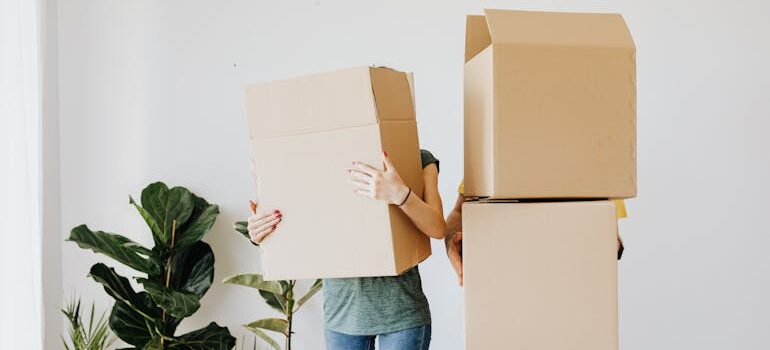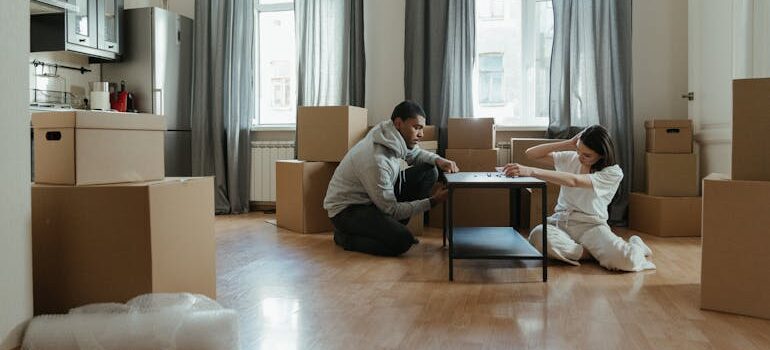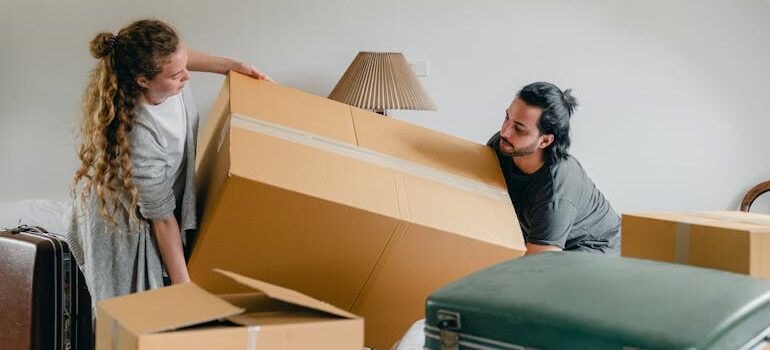When it’s time to move, there’s always the risk that something will break, get lost, or go missing. That’s why protecting your belongings during a move should be one of your top priorities. Many people wait until the last minute and end up tossing things into boxes without thinking. That leads to damage. It’s better to plan ahead. Start by packing smart and knowing which items need special care. Also, if you’re hiring movers East Bay Area, check their reviews and make sure they’re insured. Moving day gets chaotic quickly, so staying organized makes a big difference. Whether you’re moving across town or across the state, the right steps help protect what matters. This guide will give you easy, clear advice so you can keep everything safe. With these tips, protecting your belongings during a move gets way easier and less stressful.
Pick The Right Packing Materials From The Start
The first step in keeping your stuff safe is using the right packing materials. Don’t rely on old boxes from the grocery store. Those boxes might look fine, but they’re often weak or already damaged. Instead, go with strong cardboard boxes made for moving. Get bubble wrapping for fragile items like dishes and glassware. Use packing paper to fill empty spaces in boxes so nothing shifts during the ride. And don’t forget high-quality tape to keep the boxes sealed. For delicate things like mirrors or electronics, buy foam corners or padded sleeves. Dish packs with built-in dividers also work well. Many packing services Bay Area offer custom kits if you don’t want to gather everything yourself. Investing in quality packing supplies costs a little more, but it helps avoid broken items and messy unpacking later. It’s worth it.

Label Everything So It’s Easy To Spot And Handle
Once you pack everything up, you need to label your boxes. This might sound basic, but it’s one of the easiest ways to protect your belongings. Don’t just write “Kitchen” on the top. Write it on the sides too. Use large letters or stickers so movers know how to handle each box. If something is fragile, label it clearly with the word “FRAGILE” in big letters. You can even use red tape or symbols. Consider color-coding boxes by room using markers or stickers. For example, blue for the bedroom, green for the kitchen, and so on. That makes unpacking faster and reduces the risk of mix-ups. If you’ve hired commercial movers in the Bay Area, labeling helps them place things in the right spots without needing to ask. Clear labels also remind helpers to be gentle with breakable stuff.
Disassemble Furniture And Wrap Each Piece Well
Large furniture can get damaged if it’s moved without being taken apart. If possible, disassemble your furniture. Remove table legs, take apart bed frames, and pull out shelves from bookcases. It’s safer to carry furniture in smaller pieces. Wrap every part in blankets or bubble wrapping. Don’t forget corners—they often get chipped or scuffed. Use moving blankets and plastic wrap to hold pieces together. Keep screws, bolts, and small parts in labeled ziplock bags. Tape those bags to the item they belong to. For electronics, unplug everything and use the original box if you still have it. If not, wrap screens in foam and place them between sturdy items. Taking the time to prep your furniture prevents damage during bumps and turns. If you’ve hired long distance movers Bay Area, proper wrapping ensures your items arrive without dents or scratches.

Keep Personal Items And Valuables With You
You shouldn’t trust important or personal items to the moving truck.
- Instead, pack them in a bag or suitcase and keep them with you. This includes IDs, passports, financial papers, medications, keys, and chargers.
- Also pack a few outfits, toiletries, and snacks for the first day in your new place. Moving trucks can be delayed, so you’ll want easy access to these things.
- Jewelry, laptops, and small electronics should also stay with you. If you have family heirlooms or special keepsakes, don’t risk losing or damaging them.
- Carry them yourself. It’s also helpful to keep all your moving documents and contracts together. That way, if there’s a problem or question, you can find the info fast.
Choose Movers You Can Trust And Stay Involved
Hiring the right movers is one of the most important steps you can take. Not all movers are the same. Research companies, check reviews, and make sure they are licensed and insured. If you’re going with a professional team, ask what happens if something gets broken. Reputable movers will have policies for handling damage or lost items. If you’re not hiring pros, and friends or family are helping, stay involved. Show them how to handle fragile boxes or bulky items. Assign specific tasks so everyone knows what to do. Avoid letting people rush or stack boxes without care. When everyone knows the plan, things run smoothly. Being present and organized helps avoid accidents. Whether you use pros or helpers, stay alert. This way, you’re actively protecting your belongings during a move and keeping things on track.

Protecting Your Belongings During a Move – Do A Final Check
Before the truck leaves, walk through your place one last time. Look in closets, cabinets, under sinks, and behind doors. People often forget small things like chargers, mail, or wall hooks. Make sure all boxes are closed and clearly labeled. Tape down any loose drawers or doors on furniture. Take photos of high-value items before the move, just in case you need proof later. If it’s raining or snowing, cover your items or use plastic wraps to avoid water damage. Review your list and double-check that nothing is missing. If you’re stressed, use a checklist to stay focused. That final walk-through can catch things you missed earlier. And remember, protecting your belongings during a move doesn’t stop until everything is unloaded safely and accounted for. A careful finish means no regrets later.


